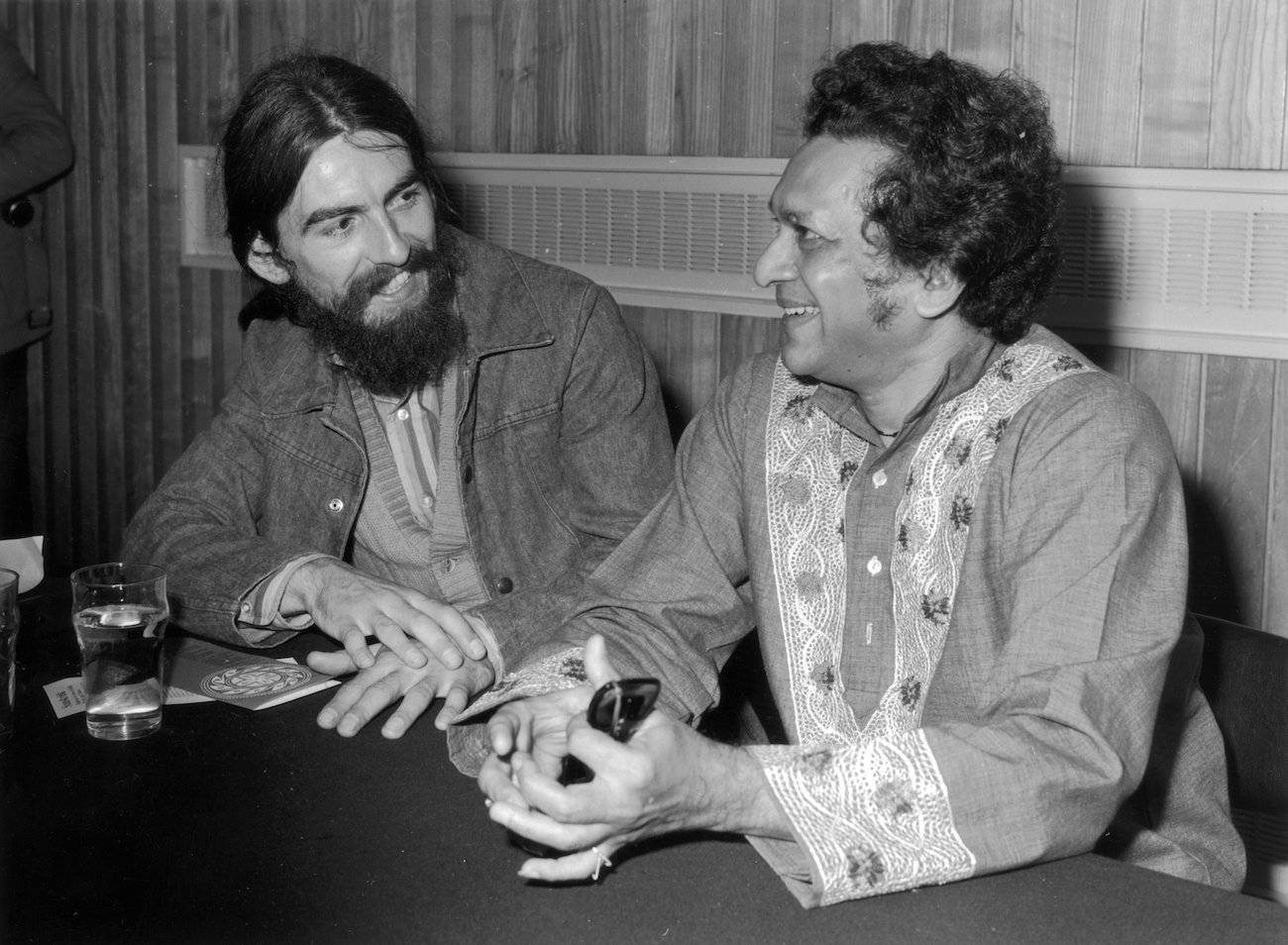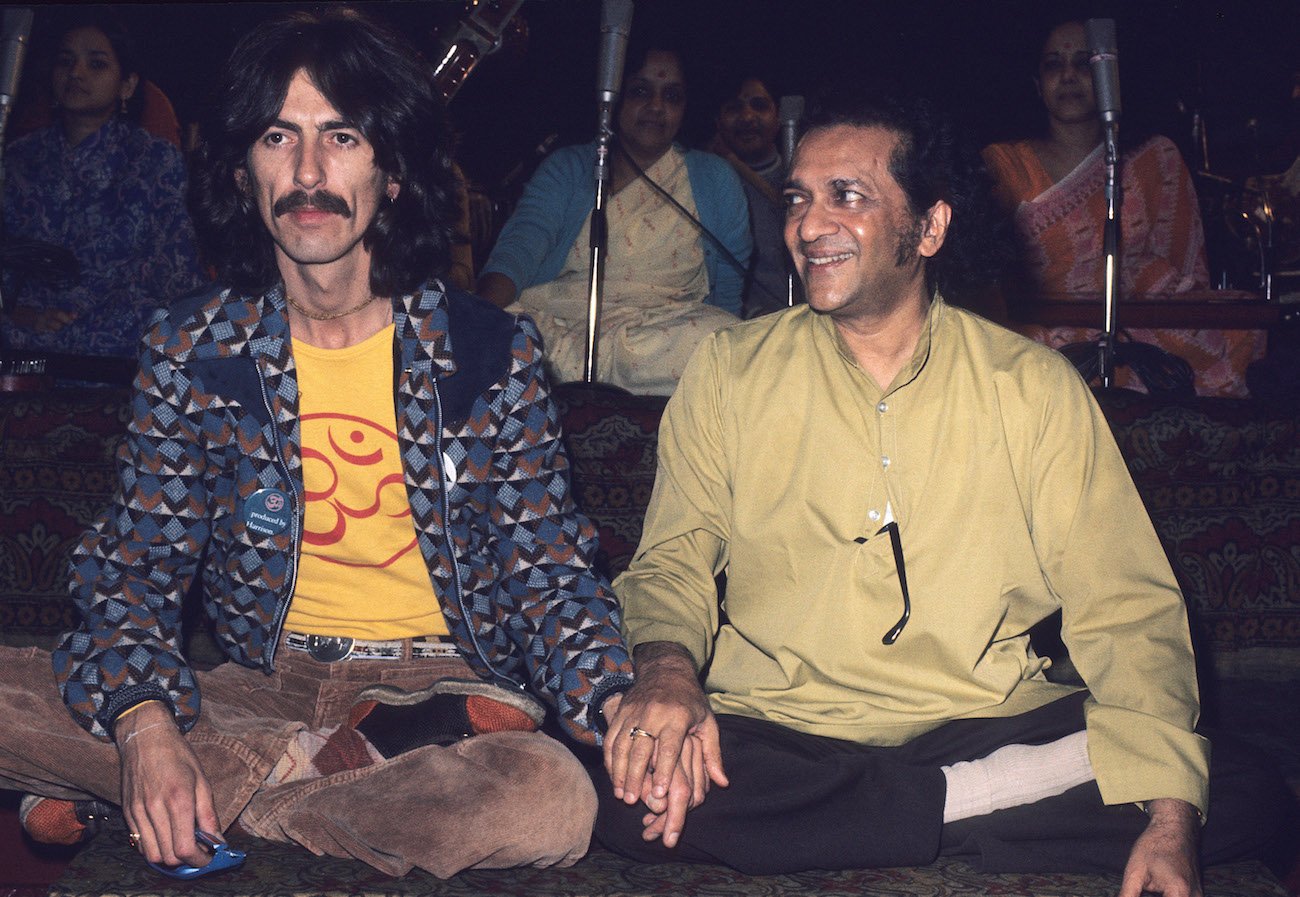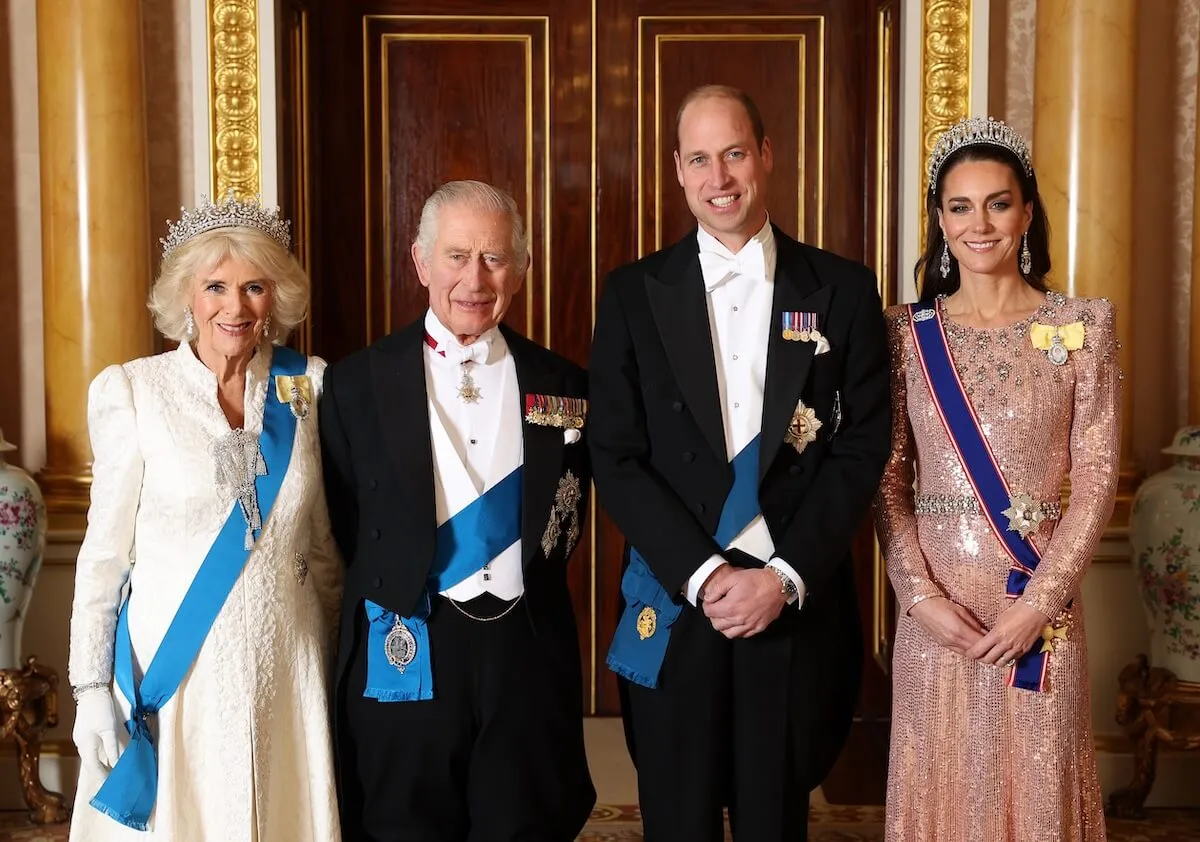
Ravi Shankar Said He Wanted to Give George Harrison as Much as He Could When They First Met: ‘He Talks so Beautifully’
Ravi Shankar and George Harrison impressed each other when they met in the mid-1960s. The universe brought them together at the exact moment they needed each other.
George craved change, for someone to impress him, and to explore what LSD had opened up for him. Shankar needed someone to take his ancient Indian ragas to the Western world. They found what they needed in each other.

Ravi Shankar and George Harrison met each other at the perfect time
In the mid-1960s, George wanted someone to impress him. The Beatle had met royalty, celebrities, and some of his biggest idols, but no one inspired him or gave him a buzz. He’d recently taken LSD, which had opened the door to God-consciousness, but he didn’t know what to do next.
However, that changed when he heard Shankar’s music for the first time. George explained what happened next to VH1’s John Fugelsang in 1997 (per George Harrison on George Harrison: Interviews and Encounters). Everything fell into place like it was all part of the universe’s scheme.
“During the days when there was the mania, the Beatlemania, well I got involved with the records, you know, I bought some of Ravi’s records, and I listened to it, and although my intellect didn’t really know what was happening or didn’t know much about the music, just the pure sound of it and what it was playing, it just appealed to me so much,” George said.
“It hit a spot in me very deep, and it was, you know, I just recognized it, somehow. And along with that I just had a feeling that I was going to meet him. It was just one of those things. And at the same time, when I played the sitar—very badly—on a Beatle record, then Ravi was coming to London.
“A lot of press were trying to set it up that we’d meet, but I just avoided that. No, I didn’t want it to, you know, be on the front page of a newspaper as a gimmick, because it meant more to me than that. So I thought, ‘Well, I’ll wait and meet him in my own time.
“I’d experienced so many things and met so many people, but I realized there was nothing actually that was giving me a buzz anymore. I wanted something better. I remember thinking, ‘I’d love to meet somebody who will really impress me.'”
Meanwhile, Shankar had heard George’s first Indian-inspired tune, “Norwegian Wood.” He didn’t think it was that good, but he loved that a British rock star was showing Eastern music to the world.
In Here Comes The Sun: The Spiritual And Musical Journey Of George Harrison, Joshua M. Greene wrote, “Shankar wanted to touch the hearts of listeners but faced the formidable task of finding a new musical language with which to do so.
“If he relied on his own subjective imagination, he might create interesting compositions but with little connection to tradition, compromising the power of God in sound. Yet if he limited himself to traditional forms of music, he might not reach a non-Indian audience. He needed a way to present pure spiritual music to a generation enmeshed in popular culture.”
In June 1965, George met Shankar for the first time. A mutual friend, the founder of London’s Asian Music Circle, introduced them at his home. That night the two musicians who came from wildly different worlds connected.
Shankar wanted to give George as much as he could when they first met
The pair surprised each other the night they met. George’s enthusiasm and humility impressed Shankar, and the rock star was amazed when the sitar legend offered to teach him music.
On their first meeting, Greene wrote, “George expressed appreciation for the master sitarist’s recordings and admitted his ignorance of how to play the sitar properly. Impressed by the young man’s humility, Shankar offered to give him lessons, and they agreed to meet later that week at George’s home in Esher.”
In 1997, Shankar explained to Fugelsang that he did not know The Beatles before meeting George, except that they were famous. Shankar expected George to be like any other rock star, but he soon found out he was wrong. George made Shankar want to give him what he was seeking as much as he could.
“I was so impressed by George at that time, who looked so much younger; he was so inquisitive, asking about so many different things,” Shankar said. “Mostly music, sitar, and, of course, along with that certain spiritual … and the only thing … I felt that his enthusiasm was so real you see, and I wanted to give as much as I could—through my sitar of course, because that is the only thing that I know of.
“The rest … I cannot express. He talks so beautifully. He is used to words, he writes poems, he writes songs. I do sometimes, foolishly, but I’m not that much… I express myself through notes, musical notes, so it’s a different way of… but anyway.”
Shankar quickly learned that George was serious about the sitar and spirituality. The sitar legend gave George the tools to succeed in both by giving him lessons on the instrument and religious texts about Hinduism. Shankar became George’s musical and spiritual guru.
The Beatle’s first sitar lesson made him want to drop everything in his life
At their meeting at Geoge’s Esher home, Shankar asked George if he knew how to read music. George replied no. “Good,” Shankar said. “It will only confuse you anyway.” Then, George learned the basics.
“Ravi showed him how to sit properly with one leg draped over the other in a half-lotus position,” Greene wrote. “He demonstrated how to hold the large gourd against the instep of the left foot.” Greene continued, “He showed George how to play micronotes by stretching a string out to different tensions.
“He defined ragas, the fundamental form of Hindustani and Carnatic classical music. There were thousands of ragas, each with its own movement and theme and corresponding time of day. When played correctly, a raga would evoke in listeners a particular emotion such as happiness, sadness, joy, or wonder.
“Ravi told George that despite having given so many years of his life to the sitar, in his heart he knew he still had a long way to go before he mastered it. Then he played again, conjuring an alchemical mixture of notes and sounds and subtle bending of strings.”
However, the most essential thing Shankar taught George was that “God is sound.” George’s first lesson with Shankar changed his life.
“Ravi embodied something new for the young musician, something that went far beyond fame and wealth,” Greene wrote. “Ravi was inviting George to examine life through a lens that revealed something extraordinary: that the talent behind his unprecedented success had a higher purpose. God is all around us but hidden. If George made the right sound, he could bring God out of hiding.”
Suddenly, George felt he could leave everything behind, including his wife, to learn more from Shankar and Indian music.
“I felt I wanted to walk out of my home that day and take a one-way ticket to Calcutta,” George said (per Greene). “I would even have left Pattie behind in that moment.”
“Not that he had ever been indifferent to loved ones, but loved ones only knew him for what he had been, not what he could become,” Greene added. “All his life he had wanted things he couldn’t afford—fast cars, fancy clothes, a big house, a beautiful wife—and yet none of it had ever really satisfied him. Here was a greater treasure, something that could not be purchased.”
George repaid Shankar for all the kindness he’d shown him during his teacher’s time of need. In 1971, Shankar asked George to help with a humanitarian crisis in his native Bangladesh. George jumped into action and organized the Concert for Bangladesh immediately.
Shankar and George remained close friends until George died in 2001. Now, they’re together again and playing up a storm.


